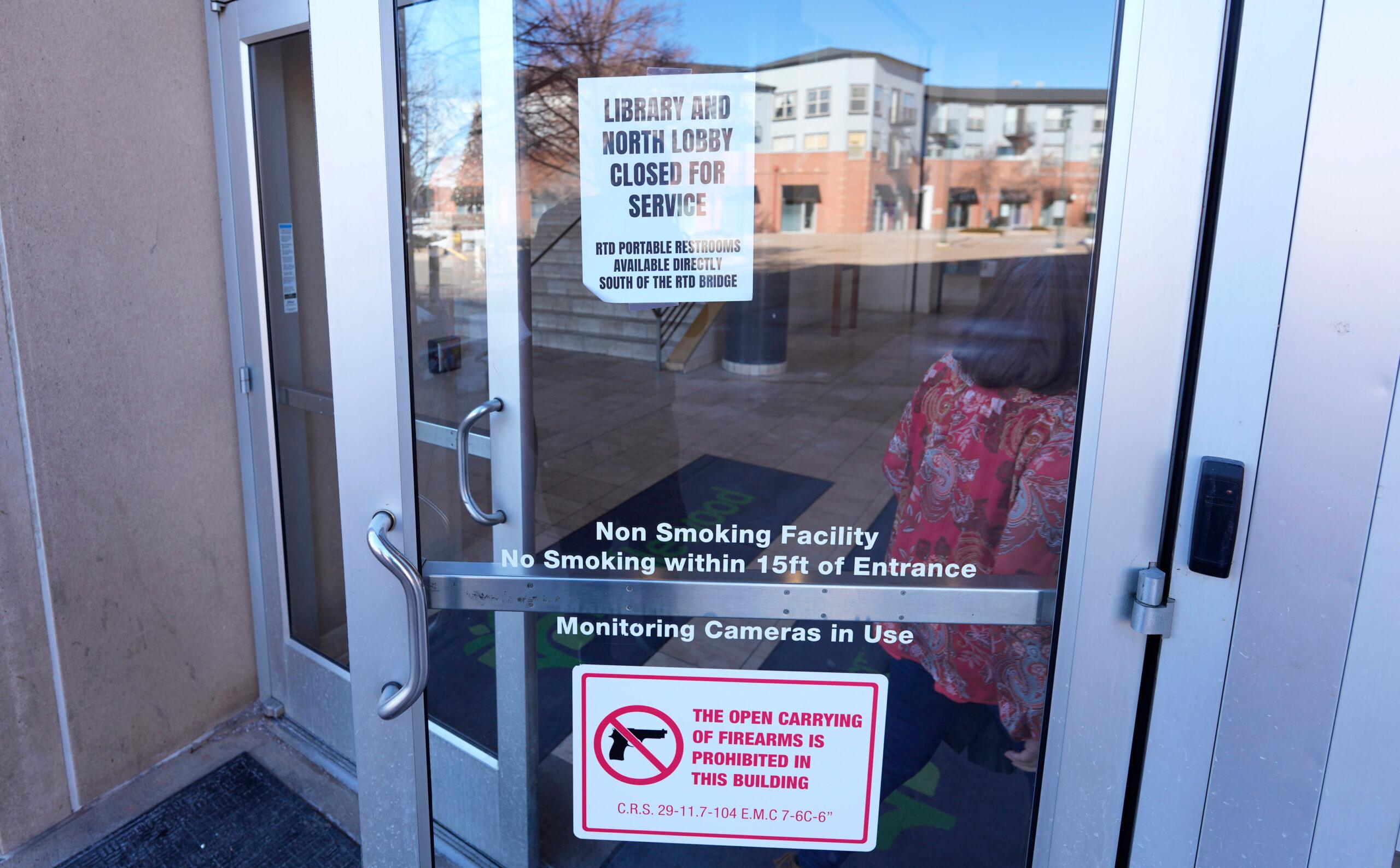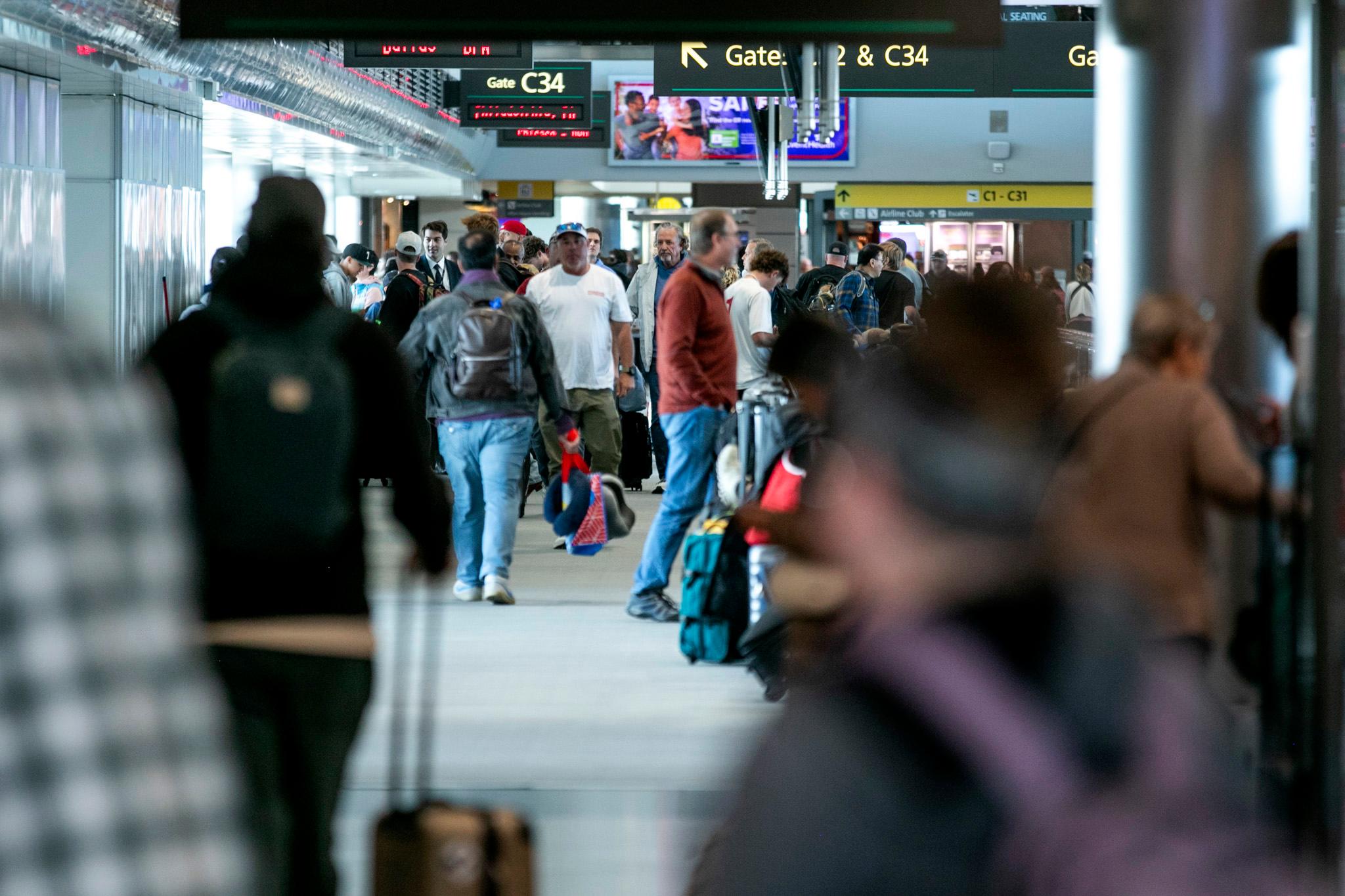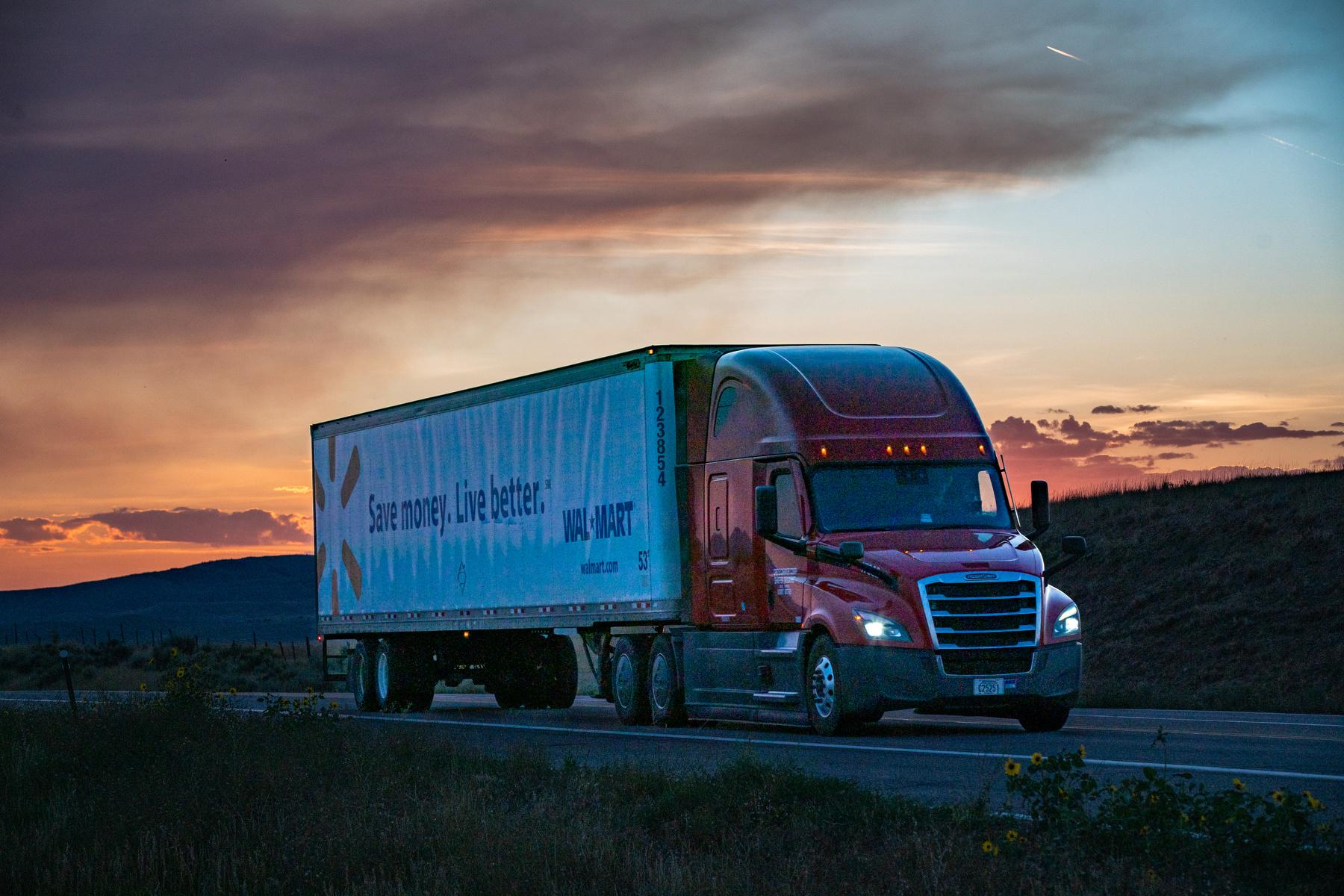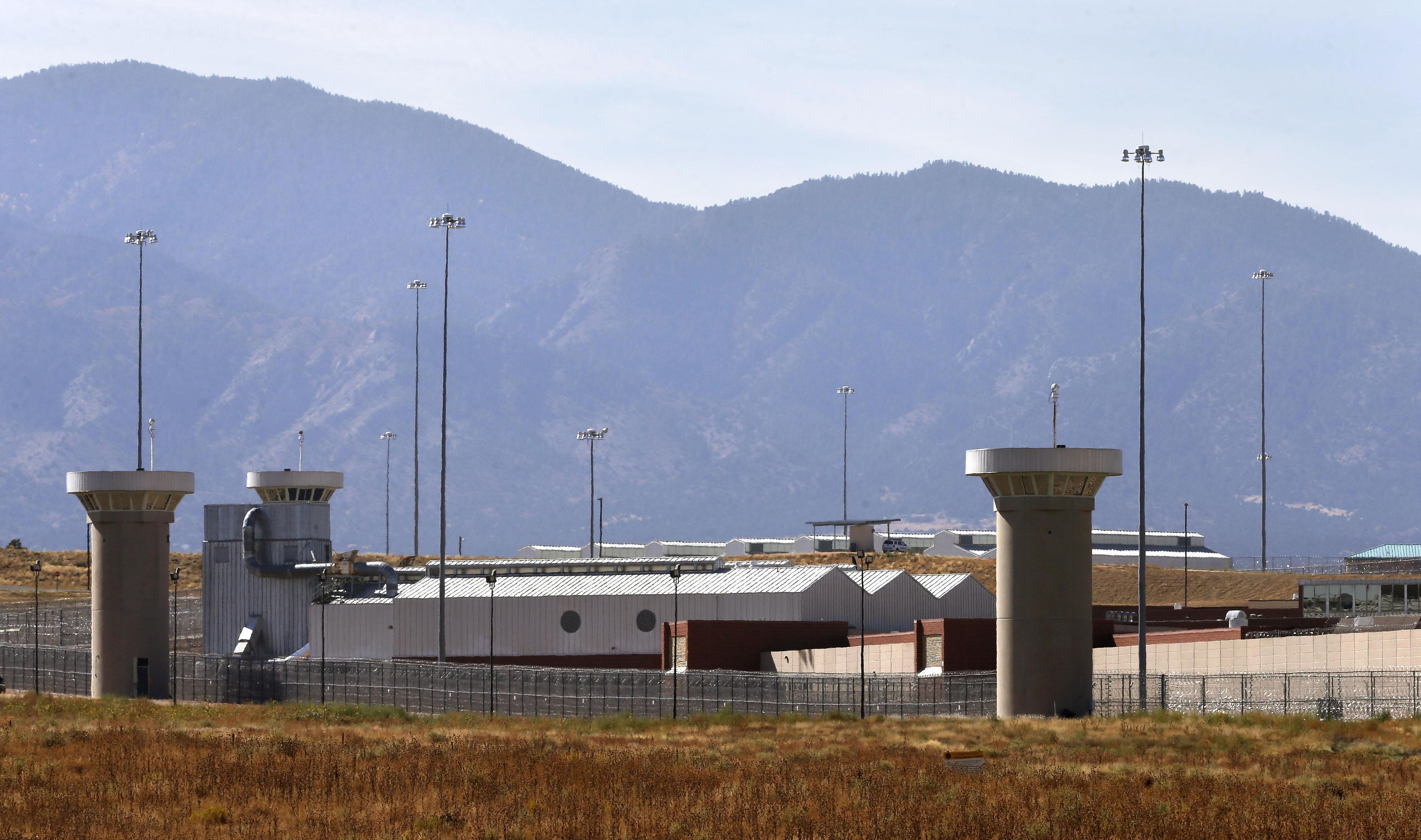
In the middle of December, the Boulder Public Library suddenly closed. Methamphetamine had been detected in some of its public-facing areas. Since then, other public spaces along the Front Range have been closed for testing or have been confirmed as contaminated.
In Boulder, bathrooms in an RTD station closed, along with bathrooms in libraries in Littleton and Englewood — and the Englewood Civic Center — after meth residue exceeding state safety level were found.
Part of the reason for this sudden increase in testing and closures is a ripple effect. After the detection of the substance in Boulder’s library, other libraries in the state decided to test their own spaces.
“We decided to proactively conduct testing in our library and other Civic Center locations to ensure safety for all,” wrote Englewood city manager Shawn Lewis in a statement. “The test results we received today are troubling, and we immediately began working to remediate affected spaces with the goal of reopening the library as soon as possible.”
But the rapid increase in the testing of public spaces doesn’t mean that every space that is open to the public is contaminated. So, what does meth contamination mean? Can you get high from using a public restroom? How do you clean meth from an area? Here’s what we found out.
Can you get high from secondhand meth exposure?
It depends on how long you have been in a contaminated area. In general, you aren’t at risk of developing symptoms of meth exposure from being in a public space for a short period of time.
“The exposure that people would get in a public restroom is really low,” said Mike Van Dyke, a professor at the Colorado School of Public Health, who has done research on meth exposure. “In terms of the risk of health effects, we're really talking about a very, very low chance of any sort of health effect.”
However, that doesn’t mean it’s impossible to develop symptoms if you’re exposed to large quantities of meth residue in air particles or on contaminated surfaces.
For most adults who have had short-term exposure, those symptoms could include dizziness, disorientation and headaches. Longer-term exposure, such as being in an enclosed space and breathing in secondhand smoke, could cause symptoms closer to what meth users experience.
Children with long-term exposure can develop chronic symptoms, such as upper respiratory irritation and central nervous system issues.
“That's why the state of Colorado is concerned about it,” said Joe Boatman, who runs Quality Environmental Services, a certified testing company based out of Boulder. “They don't want people's health being affected unknowingly by methamphetamine in the air or on surfaces.”
What does meth contamination mean?
Colorado considers a space to be contaminated if meth residue has been detected at levels above 0.05 micrograms per 15.5 square inches.
But those regulations center around protecting children from exposure in residential settings.
Laura Dixon, spokesperson for Colorado Department for Public Health & Environment’s Hazardous Materials and Waste Management Division, said the threshold for testing wasn’t designed around contamination in public spaces.
“Standards have not been established for short-term or incidental exposure in public areas, such as libraries,” Dixon said in an email.
Van Dyke agreed. “I really think if we're going to start sampling public bathrooms for methamphetamine, we need to come up with a different regulation that's much higher than the residential regulation in Colorado,” he said.
Meth contamination thresholds vary by state. In California, the trigger level that requires cleaning is 1.5 micrograms per 15.5 square inches.
How does a space become contaminated with meth?
Anywhere a person has manufactured or used meth is considered a contaminated property, according to Colorado's definition.
Once a property has been contaminated, the residue lingers in the air and on surfaces for a long time — one peer-reviewed study found meth residue five years after the drug was used in a home.
“If it's contaminated, the residue does not go away. It remains until it's physically cleaned away,” said Boatman.
To test for meth contamination, certified testers swab a 15.5-square-inch area with an alcohol-infused wipe.
If 0.05 micrograms or more of the substance is detected in the sample, the property owners are required to contract a certified cleaning service. Sometimes, an entire facility or building will be tested to see the full extent of contamination.
Under state regulations, the owner of a contaminated property must hire a certified cleaner to decontaminate the area and bring residue levels to under 0.05 micrograms per 15.5 square inches. Or, the owner may demolish the property.
In Colorado, testers and cleaners are required to be certified. If someone is certified in one service, they cannot be certified for the other. This prevents conflicts of interest.
How are meth-contaminated areas cleaned?
Peter Riley, owner of Crystal Clean Decontamination, is just one of many certified cleaners across the state. When he and his team pick up a job, they suit up in personal protective gear, such as battery-powered respirators and full-body hazmat suits.
The first step of the job is removing what can’t be cleaned, such as carpet or furniture.
“Usually the porous materials are going to just be disposed of, unless it's worth cleaning. And then it would take a lot of trying to clean it to get it to pass regulations,” Riley said.
After the area is emptied out, the crew sets up a negative air environment, a technique often used in medical settings to prevent the flow of contaminated air into non-contaminated spaces.
The next step is cleaning.
“Whether it's just hand scrubbing or mechanical extraction or power washing or just using a toothbrush, it gets pretty crazy,” Riley said. “You could even get to the point of having to strip paint or remove drywall in homes.”
Heavily contaminated homes often require Riley’s team to remove insulation and clean the building’s structure.
Depending on the size of the contaminated area, the process could take days, if not weeks. And because meth sticks to surfaces so stubbornly, sometimes a test to confirm it has been removed reveals it is still present.
The cost of the job depends on the size of the area. Riley said large commercial buildings that need cleaning sometimes cost up to $100,000, but prices go down for residences.
“Most of my jobs in [the] Denver Metro are going to be somewhere between $10,000 and $30,000 for a residential property,” he said.
Why are we hearing more about this now?
Meth is a highly-addictive, illegal drug that stimulates the central nervous system and can be injected, smoked or snorted. In Colorado, it is one of the most used, as well as one of the most fatal.
Meth overdoses have steadily increased since 2000, according to state public health data. In 2021 alone, there were 749 deaths from meth overdoses, more than twice the number in 2019. Prescription opioids, which are often spiked with fentanyl, caused about 300 more overdoses in 2021, according to CDPHE. A federal drug use survey found that less than one percent of Colorado adults take meth.
Despite its prevalence, there is no government-approved medication to address meth addiction. The National Institute on Drug Abuse said the most effective treatments are behavioral therapy and motivational incentives, like vouchers or small cash rewards to encourage patients to remain drug-free.
Dr. Karin Pacheco, an allergist with National Jewish Health who studies the impacts of meth exposure, said the recent closures for meth contamination are high-profile cases, but it doesn’t exist in a vacuum. State regulations don’t mandate periodic testing, so most landlords, homeowners and businesses have only tested when faced with proof that meth was used or cooked on their property.
“If you don't look for it, you won't find it. So, who knows what the meth contamination has been over the past five or 10 years. We don't know because we didn't look and meth has been a problem for a number of years here and in most major cities, right?” Dr. Pacheco said. “It's cheap, fairly easy to make and so people use it. I think we just started looking.”
Colorado has weighed introducing public injection facilities to bring drug usage away from public spaces
An attempt to open the nation’s first supervised injection facility, where users could take drugs with supervision, stalled statewide in 2019 when Republicans in the state legislature signaled they would not support a bill. And when Denver City Council voted to approve a similar program, federal officials warned the city such a site would be illegal under federal law, leading to waning support from city leaders.
Dr. Pacheco said safe injection sites in Europe haven’t solved the root of the issue: addiction.
“The people who came [into the safe injection sites] over the years started looking worse and worse,” she said. “So drug addiction, you may want to get it off the street, but for the individual to be able to continue using isn't necessarily a good thing.”
She instead called for a larger social net, starting with drug addiction clinics.
“There are many people who would like to just get off the stuff and there's not a lot of options for doing that,” she said, pointing to Denver Health’s addiction treatment services as a first step.
Legislators put new money and resources into addiction treatment last year, including spending $10 million on emergency treatment and requiring jails to screen incoming inmates for substance use disorder and provide treatment while they are in custody. However, their efforts have primarily focused on fentanyl users. The state and local governments have also stepped up efforts to combat overdoses. In 2022, Denver’s Substance Misuse Program began offering residents Naloxone — the opioid overdose reversal medication — and fentanyl testing strips.
In Boulder, the city repurposed an office building to provide a temporary outpatient drug addiction treatment center. And it is currently buying a house that will serve as a permanent inpatient treatment center for local residents.
Both Riley and Boatman, the certified tester and cleaner, believe the problem is more widespread than it seems. Riley said if more municipalities begin testing, it could reveal a statewide issue.
“It's just the tip of the iceberg,” Riley said. “Everywhere there's a public area, [people] have the right to go and be there.”
If you, or a loved one, is facing substance use disorders, the Substance Abuse and Mental Health Services Administration National Helpline is a confidential, free 24/7 service that refers callers to treatment centers, support groups and community-based organizations.
Correction: A previous version of this story misidentified the company Crystal Clean Decontamination. In Colorado, whether contaminated items are required to be sent to hazardous waste sites depends on the level of meth detected.









